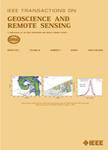版权所有:内蒙古大学图书馆 技术提供:维普资讯• 智图
内蒙古自治区呼和浩特市赛罕区大学西街235号 邮编: 010021

作者机构:CALTECH Jet Prop Lab Pasadena CA 91109 USA Univ Maryland Dept Meteorol Joint Ctr Earth Syst Sci College Pk MD 20742 USA
出 版 物:《IEEE TRANSACTIONS ON GEOSCIENCE AND REMOTE SENSING》 (IEEE Trans Geosci Remote Sens)
年 卷 期:1998年第36卷第1期
页 面:25-37页
核心收录:
学科分类:0808[工学-电气工程] 1002[医学-临床医学] 08[工学] 0708[理学-地球物理学] 0816[工学-测绘科学与技术]
基 金:National Aeronautics and Space Administration NASA (NAGW4285)
主 题:interferometry remote sensing synthetic aperture radar (SAR)
摘 要:Satellite radar interferometry (SRI) provides an important new tool for determining ice-flow velocity, Interferometric measurements made from a single-track direction are sensitive only to a single component of the three-component velocity vector, Observations from along three different track directions would allow the full velocity vector to be determined, A north/south-looking synthetic aperture radar (SAR) could provide these observations over large portions of the globe, but not over large areas of the polar ice sheets, We develop and demonstrate a technique that allows the three-component velocity vector to be estimated from data acquired along two track directions (ascending and descending) under a surface-parallel how assumption, This technique requires that we have accurate estimates of the surface slope, which we also determined interferometrically, To demonstrate the technique, we estimate the three-component velocity field for the Ryder Glacier, Greenland, Our results are promising, although we do not have yet ground-truth data with which to determine the accuracy of our estimates.